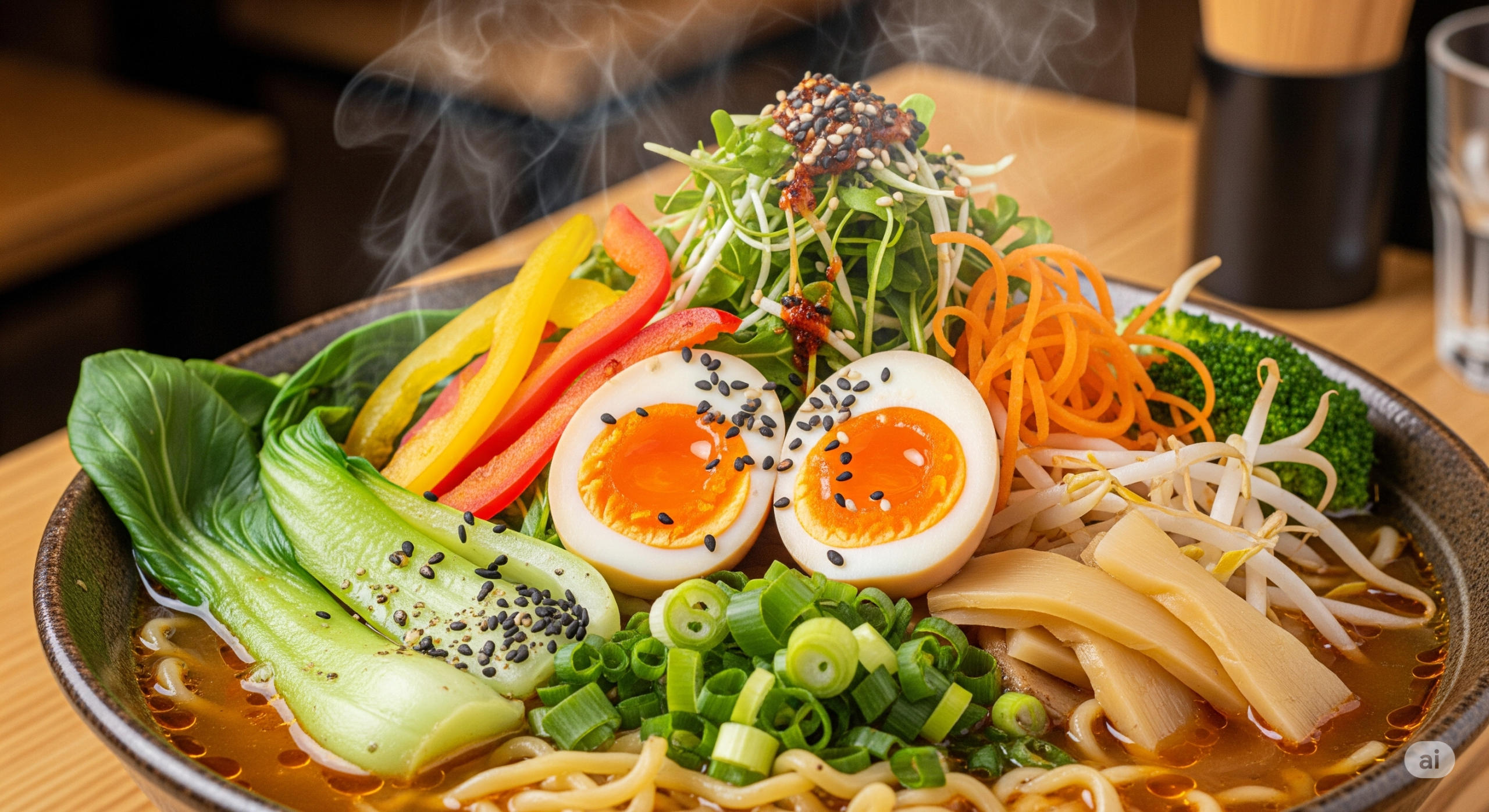1. The Image of ‘Vegetable Ramen’
The name ‘vegetable ramen’ gives us a healthy impression. Because it uses vegetables like mushrooms, cabbage, and radish to make the broth instead of meat, we expect it to be less oily and lighter.
2. Fat Content vs. Sodium Content
– Fat: Indeed, vegetable ramen can be lower in fat, especially saturated fat, compared to regular ramen that uses meat oil or pork bone broth. In this respect, it is a better choice.
– Sodium: However, the problem is ‘sodium.’ Meat broth has a deep, savory flavor on its own. It is difficult to achieve that same depth of flavor with only vegetables. To compensate for this lack of flavor, the soup packet of vegetable ramen may contain a larger amount of salt and seasonings like MSG.
3. Comparing Actual Products
If you check the nutrition labels of vegetable ramen products on the market, you can easily find cases where the sodium content is similar to or even higher than that of regular meat-based ramen. There can be a ‘high-sodium’ trap hidden behind the healthy image of ‘vegetables.’ Of course, the noodles themselves are still fried, refined wheat flour, so their effect on blood sugar is the same.
Summary: ‘Vegetable ramen’ may be lower in fat, but its sodium content can be similar to or higher than regular ramen because more salt may be used for flavor. You should not judge it as healthy based on its name alone; you must check the ‘sodium’ content on the nutrition facts label.


Leave a Reply